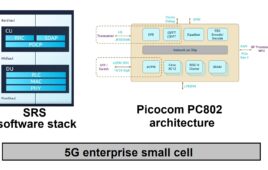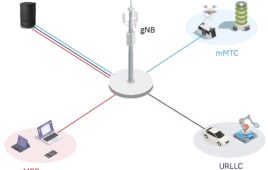TOKYO – Japan has emerged as one of the world leaders in mobile broadband deployments. Home to 35 million people, Tokyo is one of the largest, most sophisticated and connected cities on the planet. 
It is Tokyo’s density, as well as its technological savvy that made it the perfect site for Ericsson’s fifth annual Business Innovation Forum last week. The event, which spanned three days (Oct. 30-Nov. 1), explored the effects that Information Communications Technology (ICT) will have on urban environments.
The recurring theme of sessions throughout the event was that mobility and connectivity will shape the way we humans think about the delivery of goods and services, as well as how we do business and provide critical services like utilities, education and health care.
Tokyo has long been ahead of the curve. During a Wednesday session, Cecilia Atterwall, Head of Ericsson’s ConsumerLab division, showed video of a Japanese woman purchasing a beverage from a vending machine using her cell phone. The clip probably wouldn’t warrant much attention if it weren’t for the fact that it was shot in 2006; NFC is still in experimental stages in United States.
The event took time to highlight new Ericsson research that shows just what aspects of city living people find most satisfying, as well as what things they expect in the way of change in the next few years (i.e. same-day delivery of goods, reservations on mobile).The research represents 1.1 billion people via 100,000 survey respondents.
And while mobile technology may indeed provide conveniences for those living in urban environments, the future urban envirnoments are expected to enable improvements in everything from health care to disaster management.
Douglas Gilstrap, senior vice president, chief strategist and chairman of business unit modems for Ericsson, said that his company is already working on projects that will create a more dense and intelligent infrastructure. He noted that Ericsson is working with operators to embed network technology in things like ordinary street lamps.
“What can that smart street light do going forward?” Gilstrap asked, answering that if connected to the network this banal city fixture could do everything from providing tourist information to sending out alerts.
Cooperation is key
While radically changing the way cities are designed, ICT strategies cannot be implemented unilaterally. John Rossant founder and chairman of New Cities Foundation, said his organization aims to facilitate cooperation between the various entities–government, academic, and enterprise–needed to effectively develop and deploy smart solutions for urban environments.
“The ICT revolution is giving us the levers to make cities much more people-centric places,” Rossant said. “We have to focus on that and cities leaders need to accelerate that.”
Offering real-world perspective on the task at hand was Charles Watanabe, deputy director of general information and communications bureau at Japan’s Ministry of Internal Affairs and Communications.
Watanabe said Japan has excelled at deploying ICT for many reasons not the least of which is the country’s rapid development of optical fiber. He also said the competitive climate between Japan’s three major carriers has helped drive quick adoption of mobility devices and services.
Japan has one of the highest smartphone adoption rates globally. Roughly 75 percent of all Japanese subscribers currently use a smartphone, and the country currently has between 30 to 40 million mobile broadband subscribers. Add to that the third highest LTE penetration on the planet and it’s easy to see why Japan is being held as a role model for the rest of the world.
Watanabe sees it that way too, saying his goal for Japan is to be the most active country in the world in terms of ICT growth and evolution.
Going deeper into the network
Companies like Ericsson will play a major role in realizing Watanabe’s vision for Japan. Given the kinds of applications needed to power the smart cities of the future, the networks will have to continue getting faster and smarter. 
“We are describing a world where the demands on the network are coming from other industries,” said Ulf Ewaldson, Ericsson’s chief technology officer. “One of the reasons we believe in the networked society is that more and more things around us are embedded with microprocessors.”
Ewaldson said that the networks of the future, which may begin with the simple metering of utilities, will eventually evolve to management of all aspects of the home and infrastructure. As such, he stressed that these network will have to guarantee performance and security.
Ericsson is working on pushing network intelligence out the very edges of the network, which Ewaldson said required the company coin a new term.
“We need to redefine the networks in terms of how deep they go into homes,” he said, adding that Ericsson is calling them ‘capillary networks,’ “which is where you go down into the smallest blood vessels of where the network reaches.”
To this end, Ericsson showed off its Radio Dot System, which the company introduced last month. A scalable in-building small cell solution, Ericsson says the Radio Dot system will remove indoor bottlenecks by providing coverage to different kinds of users in medium to large indoor locations. About the size of a hockey puck, the Radio Dot uses an antenna element – a radio dot – which enables high performance mobile broadband. One cell can be used to cover each floor, or multiple cells can be added to enhance capacity.
The unstoppable migration to cities
 Currently 30 percent of the Earth’s population lives in an urban environment. By 2050, fully 70 percent of all people on the planet are expected to live in cities, according to the World Health Organization. This will necessitate a kind of organization, automation and sophistication not unlike what we see in Tokyo today. Tokyo is a living, breathing example of how 35 million people can get along with unexpected order and civility. It is a city that has achieved extremely low crime and homelessness rates, and deployed some of the most advanced infrastructure on the planet. Tokyo really does offer hope that the wheels of humanity can continue to turn even as population skyrockets.
Currently 30 percent of the Earth’s population lives in an urban environment. By 2050, fully 70 percent of all people on the planet are expected to live in cities, according to the World Health Organization. This will necessitate a kind of organization, automation and sophistication not unlike what we see in Tokyo today. Tokyo is a living, breathing example of how 35 million people can get along with unexpected order and civility. It is a city that has achieved extremely low crime and homelessness rates, and deployed some of the most advanced infrastructure on the planet. Tokyo really does offer hope that the wheels of humanity can continue to turn even as population skyrockets.
Adrian Ionel, president and CEO of Mirantis, said he believes that the networks of today are rudimentary in comparison to what he expects in the very near future.
“I believe what’s happening in the world today is an incredible infrastructure revolution,” Ionel said. “I believe we are going to have 1000 times improvement in computing power in just 10 years.”
Ionel’s prediction may sound lofty but if governments and technology players are going to make good on the next evolution of our cities, the networks really are going to have to improve on that kind of level.
Daniel Ehrenstrahle, Head of Strategy and Portfolio at Ericsson Business Unit Networks, said local and national governments understand the promise of ICT and are ready to work cooperatively to make progress.
“There’s lost of interest from government in the United States and Europe, and lots of potential, really, to create a lot potential to integrate antennas and base stations into light posts and those kinds of things,” Ehrenstrahle said.
He added that governments are indeed evolving their role in pushing ICT infrastructure to the next level, but its up to the technology companies to come up with the plans.
“I think they are embracing this kind of thing, and they’re trying to figure out what the next step is,” he said. “Government doesn’t have a blueprint, so it’s it’s very much up to companies like Ericsson and others to come up with a plan, but overall we see a lot of interest.”



